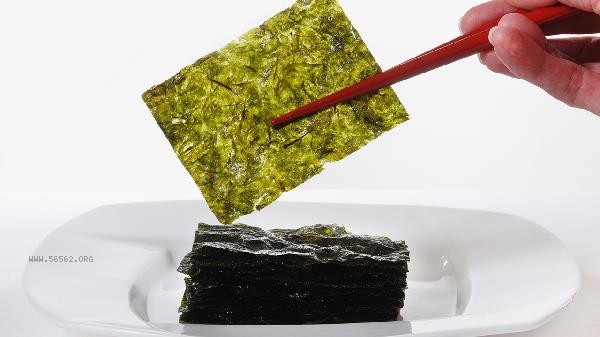Seaweed should be sealed and refrigerated after opening to avoid moisture and spoilage. After opening, seaweed is prone to moisture, oxidation, and bacterial growth. The correct storage methods mainly include sealed refrigeration, dry environment, dark storage, packaging treatment, and regular inspection.

1. Sealed refrigeration
After opening, the seaweed should be immediately placed in a sealed bag or can, and the bag should be tightly sealed after the air inside is expelled. Food grade fresh-keeping boxes or vacuum sealed bags can be used as sealed containers, and the refrigeration temperature should be controlled at 0-4 degrees Celsius. A refrigerated environment can effectively slow down the oxidation rate of seaweed, prevent moisture and clumping, and inhibit microbial growth. Be careful to avoid frequent opening and closing of containers to prevent the generation of water vapor from alternating between hot and cold.
2. Dry environment
Food desiccants or deoxidizers can be placed in containers for storing seaweed to absorb residual moisture. If you find that the seaweed has slightly returned to moisture, you can lay it flat on a baking tray and bake it at 50 degrees Celsius for 10 minutes to remove moisture. Never use newspapers or ordinary plastic bags to wrap, as these materials cannot block the penetration of water vapor. It is recommended to cover the container with a moisture-proof aluminum foil bag in humid areas in the south.
3. Avoid light storage
The phycocyanin and vitamins in seaweed are easily decomposed when exposed to light, and should be stored in opaque containers or in a dark corner of the refrigerator. Transparent containers can be wrapped in dark fabric to block light. Light exposure can cause the seaweed to fade, lose nutrients, and produce a halal flavor. After opening, it is even more important to avoid direct sunlight or strong kitchen lighting.

4. Packaging Processing
After opening the large packaging of seaweed, it is recommended to divide it into small portions according to the weekly dosage to reduce the overall exposure to air. Immediately seal the remaining portion after each use, and clean and dry the packaging container. The independent small packaging can be stored with silicone drying tablets, suitable for making seaweed rice and other scenarios that require small quantities and multiple uses.
5. Regular inspection
Check the status of seaweed every week. Normal seaweed should remain crispy, dark purple brown, and have a fragrant seaweed aroma. If mold spots, stickiness or odor appear, they should be discarded immediately. Seaweed that has not been dampened can be stored in refrigeration for about a month, but it is recommended to consume it within 2 weeks after opening. Freezing storage can be extended for up to 3 months, but the texture will become tough after thawing.

When consuming seaweed in daily life, it can be paired with ingredients rich in vitamin C to promote iron absorption, such as adding lemon juice to cold dishes or eating with kiwifruit. The iodine content in seaweed is relatively high, and patients with thyroid diseases should control their intake. It is recommended to use seaweed as a seasoning ingredient, taking about 5 grams each time to meet daily iodine requirements. If the color of seaweed becomes lighter or brown spots appear after opening, it indicates that it has oxidized and deteriorated, and is not suitable for further consumption. Properly preserved seaweed can maximize the retention of its nutritional components such as protein, calcium, and dietary fiber.








Comments (0)
Leave a Comment
No comments yet
Be the first to share your thoughts!